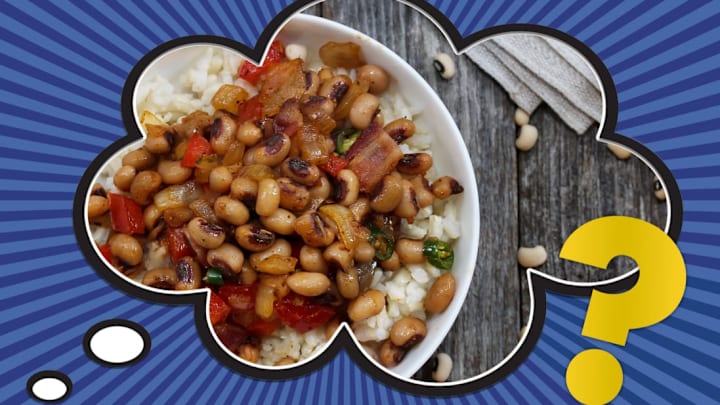Cultures around the world have unique ways of ringing in the new year, from tossing furniture out windows in South Africa to burning scarecrows in Ecuador. In the American South, serving a pot of black-eyed peas is a traditional way to encourage luck in the new year. The ingredient may be humble, but the history and legends surrounding the legume have made it a symbol of prosperity to Black Americans in the South.
Like many staples of Southern cuisine, black-eyed peas were brought to North America by enslaved Africans through the Atlantic slave trade. Enslaved people cultivated small plots of the crop on the rice plantations where they were forced to work and harvested the legumes for themselves. According to food historians, they would have had time to use black-eyes peas in celebratory dishes during winter when farm work was slow, which may be how it became associated with the January 1 holiday.
One legend credits the legume’s lucky reputation to the Civil War. According to the story, Union troops ignored black-eyed pea gardens when raiding Southern farms, as they regarded them as feed for livestock (hence the nickname cowpeas). With no other crops to eat, Southerners relied on the untouched black-eyed peas to get them through the winter.
For centuries, Black cooks have been using tricks to elevate the simple ingredient into rich, hearty meals. The most common way to eat black-eyed peas on New Year's Day is in Hoppin’ John, a traditional Southern recipe that mixes the beans with rice and salted pork such as bacon. The dish is often served as part of New Year’s feasts alongside leafy greens, which represent paper money, and cornbread, which symbolizes gold. Other superstitions linked to the food include eating at least 365 beans on the first day of the year—while leaving three on your plate—for good luck.
The American South is one of several regions of the world that eats legumes for good fortune in the new year. Some Italians eat lentils because they resemble coins, and Sephardic Jews eat black-eyed peas for Rosh Hashanah, which may have also influenced the American New Year’s tradition.
Have you got a Big Question you'd like us to answer? If so, let us know by emailing us at bigquestions@mentalfloss.com.
Discover More Big Questions Below:
A version of this story was originally published in 2021 and has been updated for 2024.
